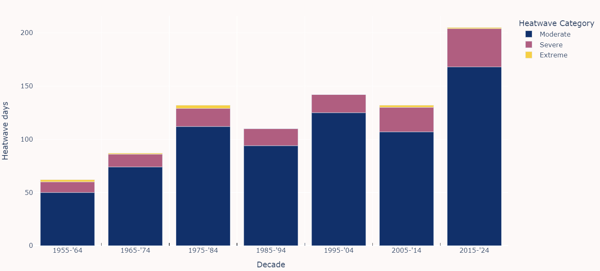Health-wise, the toll is equally alarming. Heatwaves have been identified as the deadliest natural phenomenon in Australia, claiming more lives than all other natural disasters combined. Vulnerable populations, including the elderly, young children, pregnant women, and those with chronic illnesses, face the highest risks. In Western Australia, the hottest summer on record not only pushed the limits of human endurance but also strained the healthcare system, as evidenced by numerous incidents of heat stress and exhaustion. The insidious nature of heatwaves, often leading to underreported heat-related illnesses and deaths, further complicates the healthcare challenge.
The impact on communities is profound, with heatwaves exacerbating social inequalities. The less privileged, who may lack access to air-conditioned environments, suffer disproportionately. This is particularly evident in Perth, or Western Sydney where even the relatively cooler climate compared to the northern towns does little to alleviate the risks for vulnerable groups. Initiatives like public cool-space sanctuaries are a step in the right direction but underscore the need for comprehensive community-based strategies to protect the most at-risk populations.

Number of heatwave days in Sydney (via Climatics)
The escalation of maximum heat and heatwave events underscores the urgent need for robust, data-driven solutions for businesses and communities, such as those offered by Climatics, to navigate and mitigate the emerging challenges which will be faced. By exploring the historic data in Climatics, it is clear that the number of days locations will be in heatwave conditions is rising across the country, and that communities and businesses must embrace a holistic approach to adapt and mitigate the impacts.
Key strategies include reinforcing infrastructure to endure extreme temperatures, incorporating efficient cooling solutions, and establishing robust health and safety protocols. Energy management becomes crucial to accommodate increased demands for cooling, alongside water conservation efforts to combat potential scarcities. Equally important is fostering community support systems and raising awareness about heatwave risks, ensuring vulnerable groups are protected. Businesses, in turn, need to develop continuity plans to maintain operations, coupled with sustainable practices to minimize environmental impact. Together, these measures form a comprehensive blueprint for resilience in an era of intensifying heatwaves.

One central park building, Sydney, Australia
By utilising the granular view of how heatwaves are evolving, Climatics is enabling stakeholders across sectors to make informed decisions regarding heat risk mitigation. Whether it's for urban planning, healthcare preparedness, agricultural practices, or community support systems, the data-driven insights provided by Climatics can guide effective adaptation and mitigation strategies, ensuring a more resilient Australia in the face of escalating heatwaves.